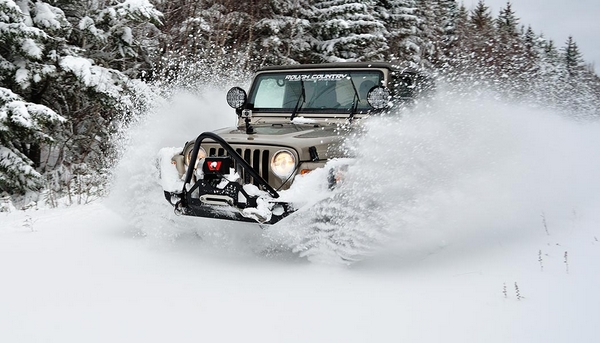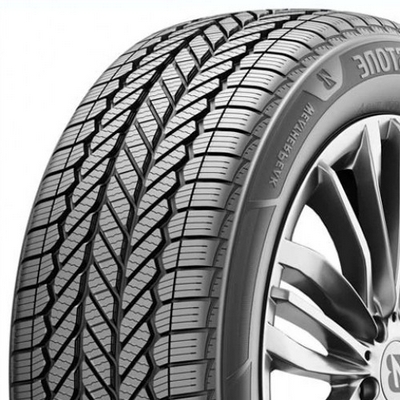
Is Your Vehicle Ready for the Winter Season?
Welcome to fall! Cooler weather, changing leaves, camping, and campfires. In my opinion, the best season of the year! The sad truth is winter is just around the corner. Are you ready? Is your vehicle ready? Let’s explore what you need to know about getting your vehicle ready for colder weather.
There are four main areas of your vehicle that need to be evaluated and prepared for winter. Traction, Vehicle Operation, Vehicle Maintenance, and Emergency Preparedness. Each area has specific items that need to be checked before the weather turns frigid outside. Let’s check them out and see if you are ready for the big chill.

Traction
More than just tires, traction refers to total vehicle control. Accelerating, stopping, and steering are all very important in maintaining vehicle control. Remaining in control of the vehicle is key to preventing crashes and keeping your family safe.

- Brakes, Traction Control, and Stability Control - All three of these systems utilize the same brake compontents to operate properly. Traction control and stability control use brake application and release to control the vehicle. Getting your brakes inspected and serviced before winter is a great way to ensure they operate properly when needed. Brake pads and brake calipers need to move freely to function properly. Due to rust and corrosion that builds up on Midwest vehicles, it is recommeded to have your brake pads and brake calipers cleaned and relubricated annually. Brake fluid also requires maintenance and should be exchanged bi-annually or every 30,000 miles.
- Steering and Suspension Systems - The vehicle needs to go where you steer it. Play in the steering components or suspension joints can cause erratic vehicle control. Worn shocks or struts, which hold your tires in contact with ground, can cause the tires to bounce and causes the vehicle body to sway and bounce. All of these issues can be magnified during inclement winter driving conditions, leading to crashes and ditch hopping adventures. Get your steering and suspension systems checked annually. It is also a great idea to have the alignment checked before each winter. A properly aligned vehicle tracks better and provides more predicitble vehicle operation and control.
Vehicle Operation
Vehicle operation is quite a broad category, but there are some specific areas that should be looked at for winter operation. There is nothing worse than running late for work and coming out to a vehicle that won’t start.
- Battery - Battery cranking power decreases with the outside temperature. Most batteries have a cold cranking rating, which is the cranking amps available at 0°F. As the battery ages, the available CCA (Cold Cranking Amps) decreases over time. Get your vehicle’s battery checked annually. If replacement is needed, find the correct fitting battery with the highest CCA rating for best overall performance.
- Engine Tune-up - A properly tuned up and maintained engine starts faster with less cranking time required. Gas engines require proper spark plugs, good quality ignition wires, and regularly cleaned fuel injectors to aid the engine’s starting ability. Direct injection gas engines also benefit from induction system cleaning every 15,000 miles to keep the valves clean, which keeps the engines running and starting smoothly. Diesel engines need quality winterized fuel flowing through regularly serviced fuel filters and clean fuel injectors to start properly. Many also rely on glow plugs or intake air warmers to warm up the cylinders for starting.
- Engine oil - The proper engine oil type and viscosity is vital to proper engine operation and cold weather starting. Most vehicle manufacturers have specific oils that they recommend based on temperature conditions. Synthetic oils, required by most vehicle manufacturers today, flow better at cold temperatures and aid in engine starting and operation.
- HVAC System - Heating and ventilation systems are crucial to safe vehicle operation in cold weather conditions. Check that your heating system provides adequate air flow and temperature. Check your cabin air filter annually at a minimum. Make sure the heat blows from where you have it set to blow from. Make sure your AC system works properly, because your AC will cycle in defrost mode to help remove moisture from the cabin compartment.
- Vehicle Lighting - We spend more time driving around in the dark in the winter. Have your lights inspected and replaced as needed so you can be seen while galivanting through the great winter wonderland.
- Starting and Warm-up - Should you warm up your vehicle in cold weather? Great question to which I wrote a BLOG article about. See https://www.sandersonautorepair.com/blog/should-i-warm-my-vehicle-up-in-cold-weather from January 2024.
Vehicle Maintenance
Vehicle maintenance is important all year long but especially during the seasons of temperature extremes, hot or cold. Poor maintenance can cause additional vehicle issues. Have your vehicle inspected annually at a minimum. Have your vehicle fluids inspected and analyzed annually. All vehicle fluids have a service life. Which varies on the system being lubricated and the environment in which they are operated in. Staying on top of your vehicle maintenance can prevent many breakdowns and keep your vehicle ready for operation. Let’s look at a few maintenance areas specifically related to cold weather operation.
- Engine Cooling System - Have your vehicle cooling system checked. Check the coolant condition and freeze protection. Coolant should be clean looking and provide freeze protection of at least -34°F. Extended life coolant has a useful life of 5 years or 100,000 miles. Have the thermostat checked for proper operation. Does the engine reach and maintain proper operating temperature? Check the belts and hoses for cracks or soft spots. Check for leaks or low coolant level.
- Dash Warning Lights - Warning lights on your dash is your vehicle’s way of asking for help. Your computer system has identified one or more issues with your vehicle. Ignoring dash lights leads to unneeded breakdown during bad weather. Get those lights looked at and addressed before you are stuck somewhere.
- Drivetrain System - Your drivetrain system includes your transmission, transfer case (4WD vehicles), PTU (Power Transfer Unit) (all-wheel drive vehicles), and axles (SUVs and trucks. These systems require annual inspection for loose components and regular fluid maintenance. Usually every 30,000-50,000 miles. Check your four-wheel drive (4WD) operation and function before it gets cold outside and you need it.
- Wiper and Washers - Check your windshield wiper and washer operation. This is a great time to replace your wipers with ones that are more resistant to ice build-up. Most washer fluid is only rated to -20°F and can freeze up in low temperatures. Top off your washer fluid tank with washer fluid rated for -25°F or below.
- Exhaust System - Make sure the exhaust is not leaking or rusted out, which can lead to carbon monoxide build-up in the passenger compartment. Keep your exhaust in good working order.
- Engine Oil - We covered this previously, but I would like to emphasize the benefits of synthetic oil. It is a gamechanger in cold weather. Modern engines also require more work from oil than just lubrication. They use the engine oil for variable valve timing, AFM (Active Fuel Management), and fuel injector operation in diesel engines. Synthetic oils hold up and function better in these environments.
Emergency Preparedness
Sometimes breakdowns and accidents happen. Keep some specific items in your vehicle during cold weather to protect you and your family from these unexpected events.
- Blanket, Coat, Extra Clothes, and Gloves - In very cold conditions, the heat from your engine is the only thing between you and certain death. Should your engine stop running for some reason, having extra layers in your vehicle can keep you from significant harm. I would recommend a wool blanket and/or a sleeping bag for maximum protection and versatility.
- Ice Scraper and Snow Brush - This is likely to already be in your vehicle during cold weather for obvious reasons.
- Flashlight and Extra Batteries - As we mentioned above, it’s dark for a great portion of the day in the winter. A flashlight is a handy tool when needed. I carry one on my person every day. Have a flashlight separate from your phone! You need the phone battery to call for help.
- Jumper Cables and/or Portable Jump Pack - Good quality, heavy wire gauge jumper cables are hard to beat for simplicity and reliability. Look for jumper cables with at least 2-gauge wire for the best performance. Modern lithium-Ion booster packs are reasonably priced, small, and provide great jump-starting capabilities. Find one with more cranking amps than you think you need as their performance, like your car battery, decreases as they get cold. They can also be a great emergency power source for your cell phone. Just remember to keep them charged.
- Cell Phone - Likely, already in your pocket. Keep it handy.
- Shovel - It’s amazing what situations you can get yourself out of with a good shovel.
- First Aid Kit, Snacks, and Water - Great items to always have in your vehicle. It is especially important during the cold seasons. You never know what situation can come up where these items can make all the difference.
Sometimes, heading out in the cold weather can’t be avoided. Properly preparing for those outings will ensure your safety and prevent roadside breakdowns. Accidents do happen but by taking the time to check out these critical areas ahead of time, you can minimize the down time. Winter driving can be fun and less dangerous when you are properly prepared for it. Get out there and enjoy the clean crisp winter air, it’s refreshing!
Aaron Bjorklund